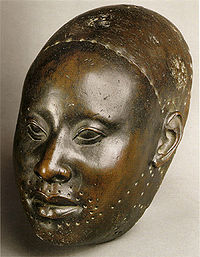Yoruba art
West African sculpturing / From Wikipedia, the free encyclopedia
Dear Wikiwand AI, let's keep it short by simply answering these key questions:
Can you list the top facts and stats about Yoruba art?
Summarize this article for a 10 years old
The Yoruba of West Africa (Benin, Nigeria and Togo, with migrant communities in parts of Ghana and Sierra Leone) are responsible for a distinct artistic tradition in Africa, a tradition that remains vital and influential today.[1]
| Part of a series on |
| Yorùbá people |
|---|
 |
|
Subgroups
|
|
Politics / History |
|
Geography |
|
Festivals / events
|
|
Notable personalities |

Much of the art of the Yoruba, including staffs, court dress, and beadwork for crowns, is associated with the royal courts. The courts also commissioned numerous architectural objects such as veranda posts, gates, and doors that are embellished with carvings. Other Yoruba art is related shrines and masking traditions. The Yoruba worship a large pantheon of deities, and shrines dedicated to these gods are adorned with carvings and house an array of altar figures and other ritual paraphernalia. Masking traditions vary regionally, and a wide range of mask types are employed in various festivals and celebrations.[2]